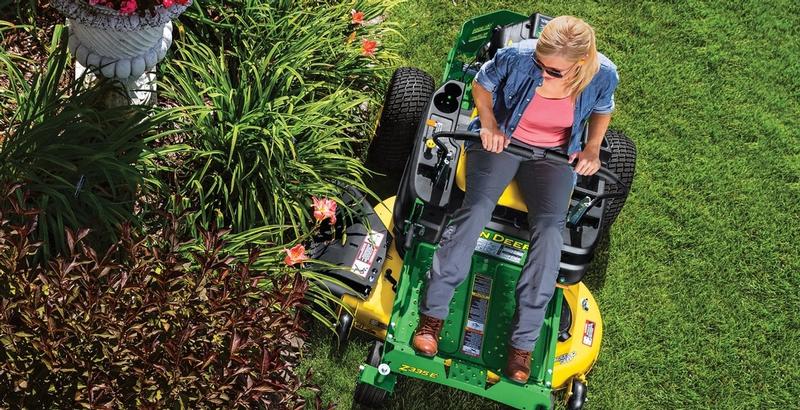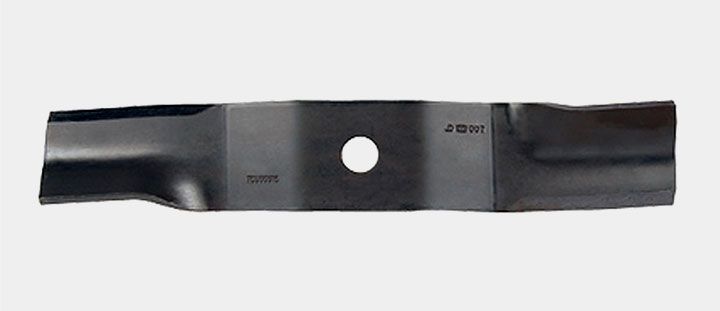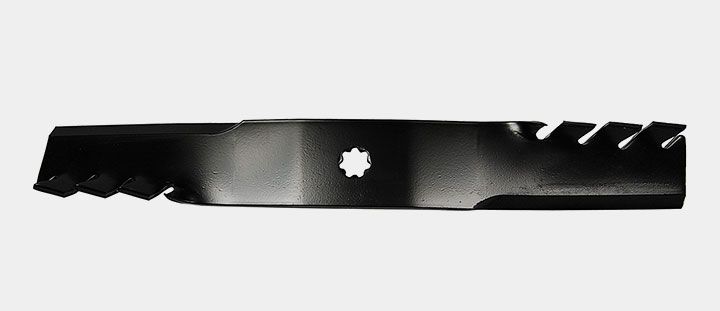
Choosing the right mower blades
You've probably heard of all the different types of blades out there: standard, all-purpose, 2-in-1, mulching, high-lift... The list goes on and on.
What does all of it really mean?
We could try to cram them into 2 or 3 categories with names that don't make much sense, but why not just tell you what they're for? Mower blades are made to satisfy three functions: discharging, mulching, or bagging. Some serve only one function, while others can do it all. Here's where they fit in.
Discharging Blades
Discharging blades are made for moving the grass clippings out from under the deck. Most discharge blades can be used for bagging and are typically called "2-in-1" (discharging & bagging) or "Standard" blades. You might also hear them called "Lifting" blades. They're designed with a curve along the edge which creates air flow, pulling the grass up to be cut.
Lifting blades come in three types: High-Lift, Medium-Lift, and Low-Lift. Essentially, the greater the lift, the more horsepower that's required. You would use High-Lift blades when tackling taller, more dense grass (High-lift = higher-lifting airflow). You should not use Lifting blades for mulching.

Mulching Blades
Mulching blades seem to make grass clippings disappear. Where discharging blades are trying to get rid of the clippings, mulching blades are recirculating the clippings, allowing them to be cut several times. The smaller clippings aren't as noticeable and will decompose much quicker.
Mulching blades have a longer curved surface and usually have extra cutting surfaces or notches along the blade edges. You may have heard them referred to as "3-in-1" (mulching, discharging & bagging) or "All-Purpose" blades.
A "3-in-1" might sound like the perfect blade but, as with most all-purpose tools, there are drawbacks. Because of the re-circulating airflow design, your mower will be working harder.
Mulching blades are generally part of a Mulching Kit, which also includes a plug for closing off the discharge opening and hardware for installation. The plug allows the blades to cut grass into much smaller pieces.

Bagging Blades
You won't find many blades designed specifically for bagging. Most bagging blades are multi-purpose, allowing you to bag and discharge or mulch. Blades made specifically for bagging are the ideal choice if that's what you're doing. Otherwise, pick up some "Standard", "2-in-1" or "3-in-1" blades.

Other types of blades
There are a few other styles of blades that didn't make this list. These are the main ones you'll come across when looking for O.E.M. (Original Equipment Manufacturer) blades. Be careful when buying non-O.E.M. blades as they may cause risk or void your mower warranty.
Choosing the right blade
Now that you know the different uses for each type of blade, you should be able to pick out a set to fit your needs. If you need more information on mower blades, need help picking out the right set for your mower, or have any other questions, give Hutson Inc a call or visit one of our 29 locations. If you're a Hutson Customer Portal user, you can order a new set online and we'll have them ready for pickup at a Hutson store near you.

